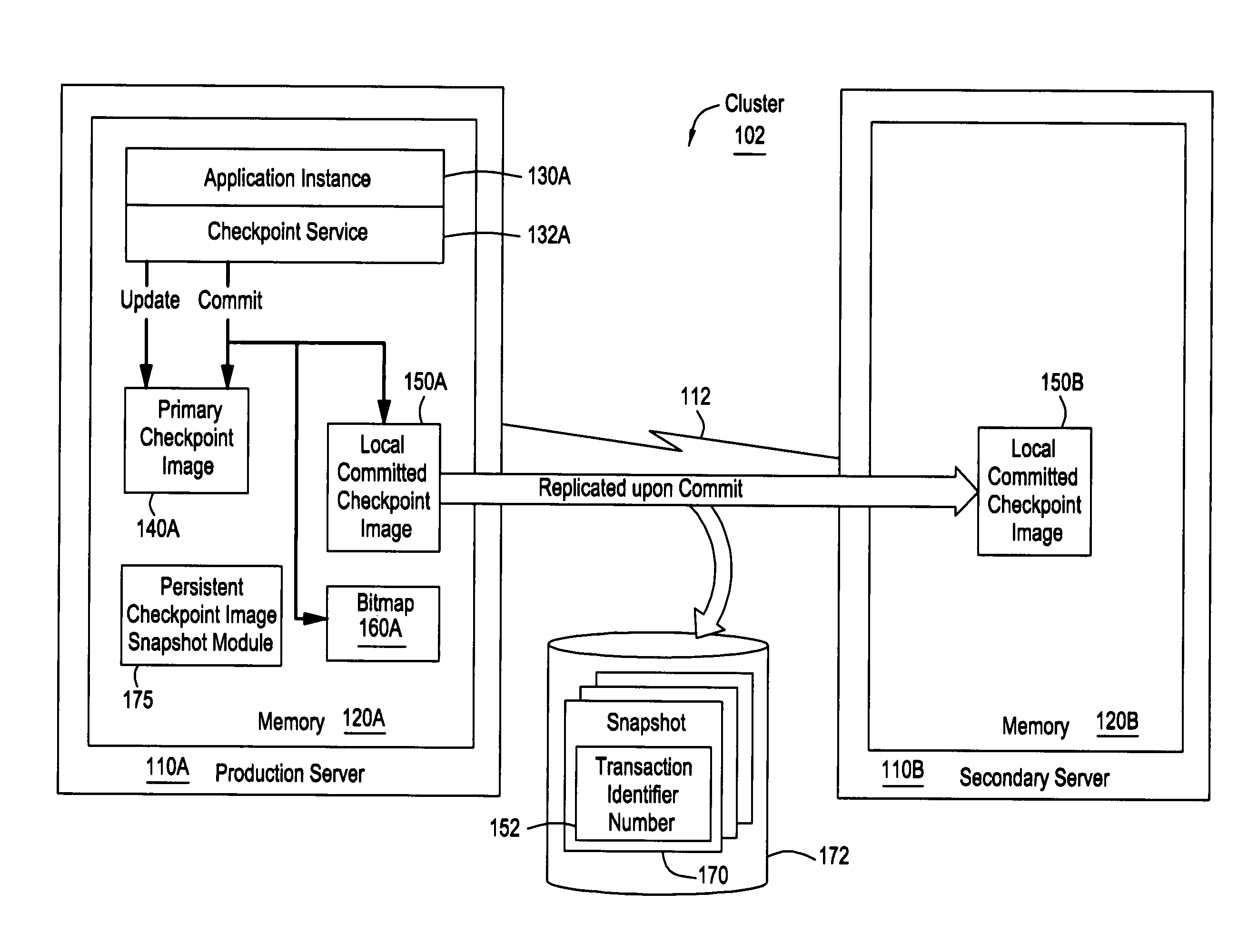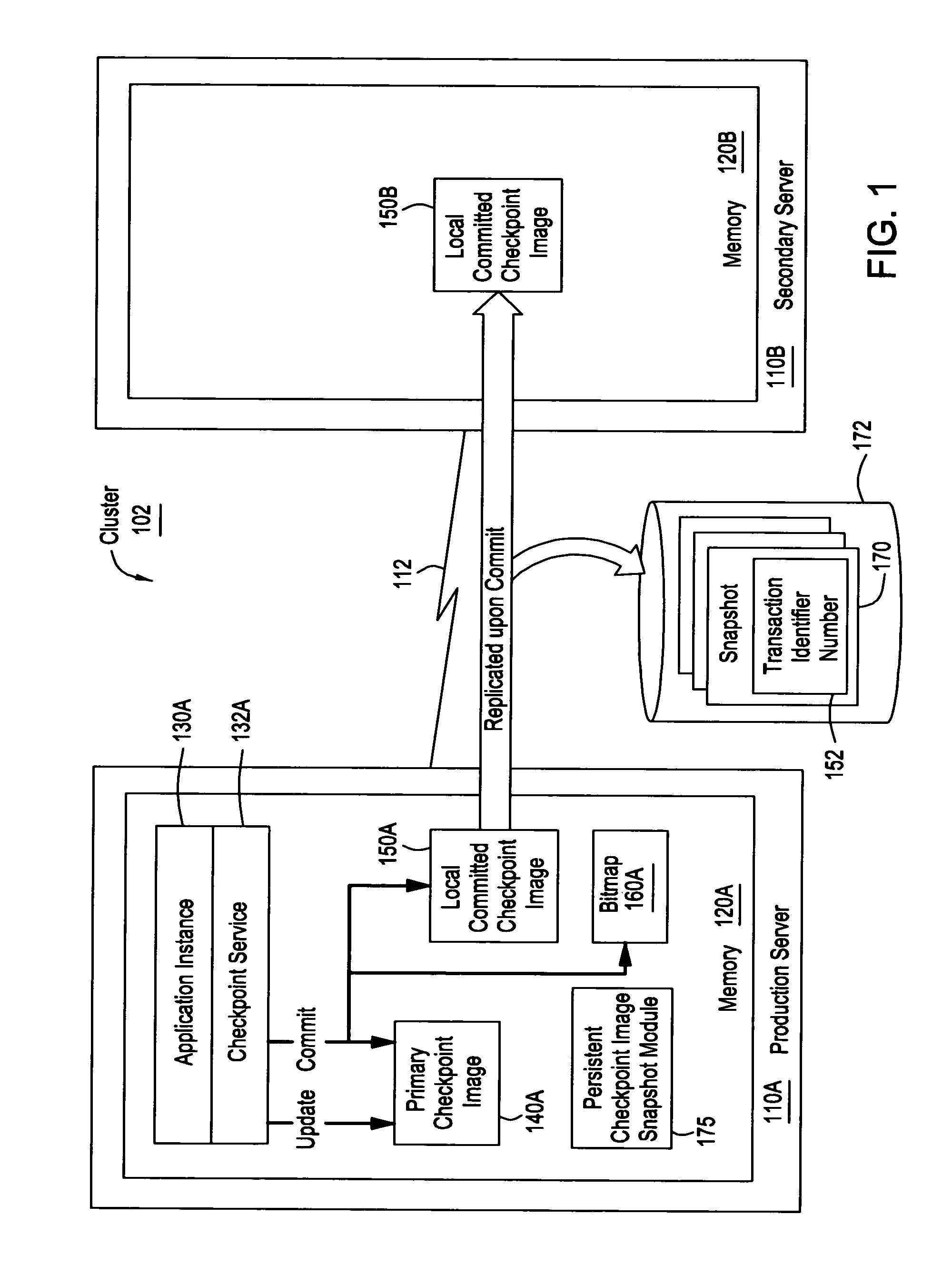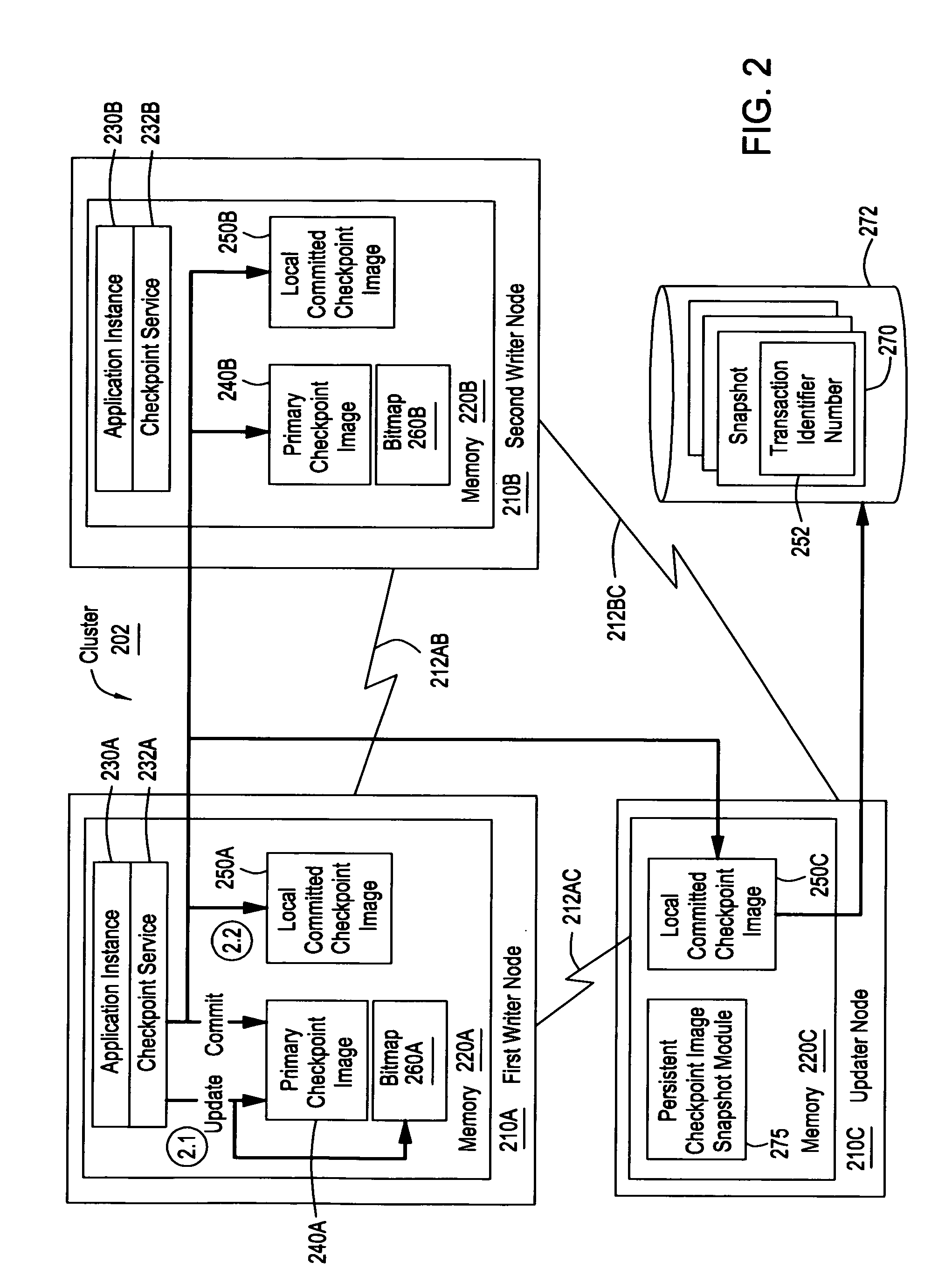Method and apparatus for creating and using persistent images of distributed shared memory segments and in-memory checkpoints
a shared memory and persistent image technology, applied in the field of computer systems, can solve the problems of complex software protocols, and inability to detect and recover from a software module failure, so as to facilitate recovery and minimize the effect of application performan
- Summary
- Abstract
- Description
- Claims
- Application Information
AI Technical Summary
Benefits of technology
Problems solved by technology
Method used
Image
Examples
Embodiment Construction
[0023]The present invention enables quick recovery from failure of one or more nodes, applications, and / or communication links in a distributed computing environment, such as a cluster. An application that was running at the time of failure can be restarted in the state that the application had before the failure and / or rollback the state of the server to an earlier time. Recovery is facilitated by ensuring that multiple nodes in the distributed environment or cluster are periodically synchronized to have consistent in-memory checkpoint images. Maintaining consistent checkpoint images across all nodes in the cluster enables the in-memory checkpoint image from other nodes to be used to recover the application on a failed node.
[0024]Recovery is also facilitated by regularly saving persistent images of the in-memory checkpoint data. The persistent images comprise a sequence of snapshots of committed checkpoint data. The snapshots are written asynchronously so that applications can cont...
PUM
 Login to View More
Login to View More Abstract
Description
Claims
Application Information
 Login to View More
Login to View More - R&D
- Intellectual Property
- Life Sciences
- Materials
- Tech Scout
- Unparalleled Data Quality
- Higher Quality Content
- 60% Fewer Hallucinations
Browse by: Latest US Patents, China's latest patents, Technical Efficacy Thesaurus, Application Domain, Technology Topic, Popular Technical Reports.
© 2025 PatSnap. All rights reserved.Legal|Privacy policy|Modern Slavery Act Transparency Statement|Sitemap|About US| Contact US: help@patsnap.com



